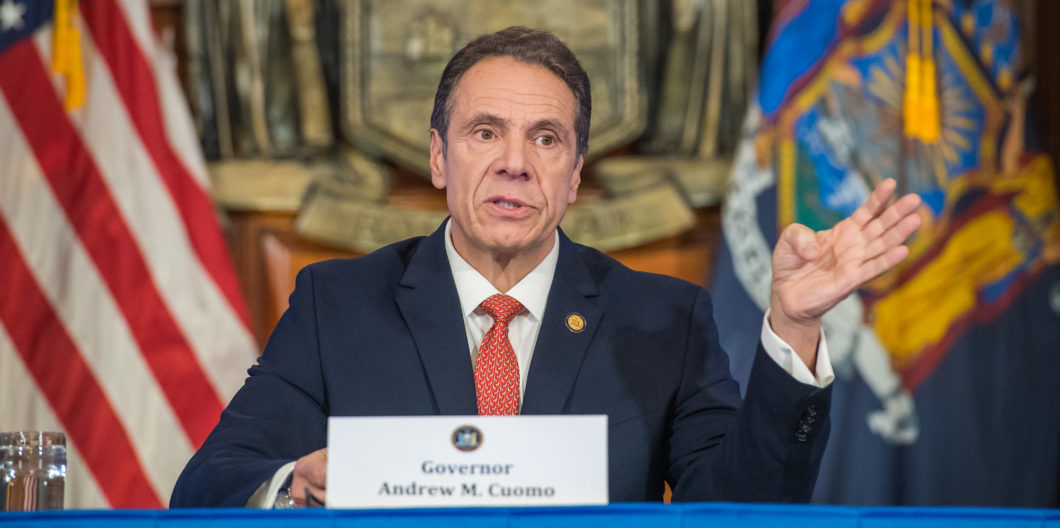The American Rescue Plan makes economic power grabs that would not be tolerated without the pretext of fighting a pandemic and a recession.
Virus Deaths in Democratic versus Republican States
Editor’s Note: Liberty Fund did not commission the research or a poll in this essay and does not issue judgment upon the results reached by the author. Such attribution was inaccurately reported in a Newsweek essay dated May 7, 2020 titled “Majority of Americans Think the US Death Rate Is Wrong, Democrats Say More Americans Have Likely Died While Republicans Say Fewer.”
When controlling for the differences in population across states, the number of deaths from coronavirus is over three times higher in states with Democratic governors than in states with Republican governors. As of Sunday, April 26, states with Republican governors have experienced 57.53 coronavirus deaths per million of population, states with Democratic governors have 179.74 deaths per million of population. Even excluding the state of New York as an extreme outlier, states with Democratic governors have 138.58 deaths per million from coronavirus, still over twice as many coronavirus deaths per million as deaths in states with Republican governors.[1]
It merits emphasis from the get-go that this relationship is obviously not directly causal. The inauguration of Kentucky’s new Democratic governor on December 10, 2019 did not triple the state’s subsequent mortality from the coronavirus relative to what it would have been had Republican incumbent Matt Bevin been reelected.
The dramatically different death rates between states with Republican and Democratic governors, however, illuminates two issues concerning state-level responses to the coronavirus. First, the dramatically lower death rates in Republican states account for the willingness of Republican governors to consider relaxed shelter-in-place policies relative to governors in Democratic states. As is appropriate in a federal system where significant policy responsibility continues to be exercised at the state level, a shelter-in-place policy appropriate for New York would not necessarily work well in Wyoming. Governors should be encouraged, not condemned, for pursuing policies tailored to the unique characteristics of their states.
Secondly, however, the question, “what did he know and when did he know it,” is not merely a question to ask the President regarding national-level policy responses to the coronavirus threat since February. The near-certainty of a global pandemic of some sort has been well-known in policy circles for decades. The unique demographic characteristics of each state that make them more or less susceptible to pandemic contagion are best known to state politicians, especially state governors. In the U.S. constitutional system in which state governments uniquely hold police powers—defined to be general authority to protect the health, safety, welfare and morality of the people (a power that the US national government does not have today and has never had)—it is a fair question to ask why so many state governors were caught unprepared. Particularly governors in states that had well known characteristics, like large, cosmopolitan cities, likely to exacerbate the risk of pandemic contagion.
Tocqueville observed that the U.S. has a “complex constitution.” Note the small “c.” In discussing the nation’s complex constitution, he was not writing of the complexity of written state and national Constitutions. He was rather discussing how the entire system of governance in the U.S. was constituted – state governments with the national government. Needless to say, the size of the U.S. national government is dramatically different today than it was in the 1830s. At the same time, it remains completely false to suggest that states no longer retain significant authority over vast domains of policy within their states. This is true as a formal Constitutional matter in that the U.S. Supreme Court has consistently denied that the U.S. national government has police power and continues to insist only state governments hold that power—except in limited areas where delegated to the national government. And it is true empirically as well.
For as large as the national government is, state governments nonetheless spend almost as much in total as the national government spends. Even in the exercise of power over everyday life, criminal and civil matters continue to be overwhelmingly defined and litigated under the authority of the states and not under the authority of the national government.
The advantage of a federal system is that it combines the advantages that large nations enjoy with the benefits of small ones. It is a virtue of federal systems that states can craft policies to their unique circumstances. Tocqueville observed that “In centralized great nations, the legislator is obliged to give a uniform character to the laws which does not encompass the diversity of places and mores.”
If the Democrats were so smart and caring, then why this huge divergence of death rates between Republican and Democratic states?
This is no more obviously true, even if much neglected by experts and commentators today, than in state-level policies crafted to respond to the coronavirus. Given the huge differences in the death rates of the virus across the difference states it should be almost immediately obvious that it is appropriate that different states craft different policy responses to virus. Different state policies that reflect different experiences and demographic factors is not a weakness of the U.S. federal system, it is a strength of that system.
The idea that a nation as large and diverse as the U.S. should have a one-size-fits-all national “shelter-in-place” policy is absurd on its face. Yet so much of the mainstream media’s commentary ignores the variation in state-level experience, and criticizes Republican governors for precipitately re-opening their states. This does not mean that Republican governors are necessarily right, but they’re certainly not wrong simply for not aping the policies of Democratic governors.
Secondly, the national government has an obvious and sizeable role in a global pandemic of this sort. It has primary authority over international matters and on matters that cross state borders. But states governments—and state governors—have the primary formal power over the health, safety, and welfare of the people in their state, they also have fine-grained information about their state’s demographic and economic characteristics.
The lack of preparation for a pandemic cannot be laid solely at the feet of the national government in the U.S. The demographic factors and other unique circumstances, say, of New York are well known to New Yorkers. It does not take a genius to recognize the special risks that New York City or San Francisco, or Chicago would face in a pandemic.
I don’t think that Republican governors would have done any better in preparing for the coronavirus pandemic than the Democratic governors have. But that’s not the proper measure: If you listen to Democrats and their cheerleaders in the mainstream media, Democratic politicians are just plain smarter and more caring than Republican politicians. That the death rate from the coronavirus is three times higher in states with Democratic governors than in states with Republican governors challenges this tendentious narrative.
The mainstream media is critical of Trump and his response to the coronavirus threat. But the last four months is not the proper measure for assessing anti-pandemic policy. Andrew Cuomo has been Governor of New York since 2011. He has had that entire time to prepare his state for a pandemic. Yet his state’s death rate is almost ten times the national average. If Cuomo were a Republican governor, this number would not be grounds for proffering his name as a presidential candidate, it would be grounds for impeachment for nonfeasance.
[1] To compute these state averages, I used data from the “Coronavirus Tracker” Table posted on RealClearPolitics, accessed Sunday morning, April 26, 2020. The data reflect the entire “population” of all 50 states. So, computation of statistical significance is not strictly appropriate. Nonetheless, if we think of the actual state data as a sample drawn from a hypothetical set of possible state outcomes, then reporting statistical significance would be appropriate. The difference for state mortality per million between states with Republican governors and Democratic governors was statistically significant at the 0.05 level of significance. The differences were statistically significant both when New York was included in the “sample” and when it was excluded.



